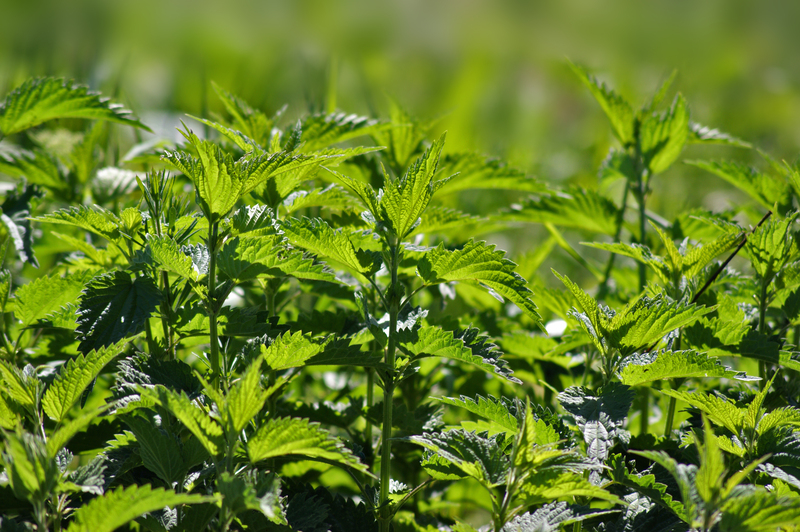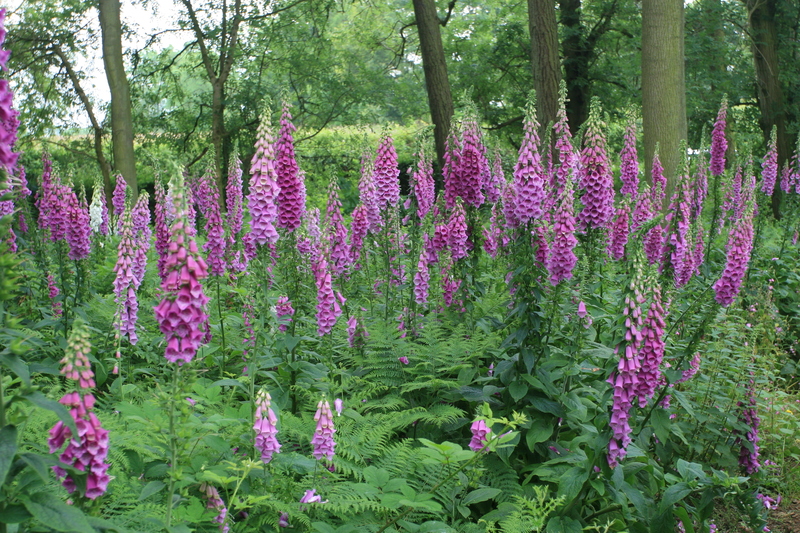Eco-Friendly Tree Stump Removal Ideas for Your Garden
Are you struggling with unattractive tree stumps cluttering your beautiful garden? Removing leftover stumps from felled trees doesn't have to harm the environment or disrupt your landscape. Instead, consider sustainable, low-impact solutions that are safe for your yard, your family, and local wildlife. In this comprehensive guide, we'll explore eco-friendly tree stump removal ideas that will help you clear your garden efficiently while keeping Mother Nature in mind.

Why Choose Eco-Conscious Stump Removal?
Tree stumps can attract pests, cause regrowth, and even become tripping hazards. Traditional removal methods, such as burning or using chemical herbicides, can negatively impact soil health, harm beneficial insects, and pollute the environment. Instead, green stump removal techniques preserve the balance of your garden's ecosystem and often add value to your landscape in subtle, creative ways.
Environmental Impacts of Conventional Tree Stump Removal
- Soil Contamination: Chemical herbicides and stump killers may seep into the ground, harming microorganisms and contaminating groundwater.
- Air Pollution: Burning stumps releases carbon dioxide, particulate matter, and potentially toxic fumes--especially if the wood is treated.
- Loss of Habitat: Removing stumps by force can disrupt habitats for insects, fungi, and birds.
For gardeners who care about sustainability, adopting natural tree stump removal methods is both a responsible and rewarding decision.
1. Using Manual Labor: Digging and Chopping
Manual stump removal is the most straightforward and chemical-free stump removal method. It's perfect for those who prefer traditional gardening, have a smaller stump, or simply enjoy outdoor physical activity.
How to Remove Stumps by Hand
- Tools Needed: Shovel, mattock, pruning saw, axe, and heavy-duty gloves.
- Step-by-Step:
- Dig around the stump to expose its roots.
- Use the mattock to cut through the major roots.
- Saw or chop off thicker roots.
- Wiggle the stump back and forth until it loosens, then lift it out.
Pros: Zero chemicals, full control over the process, and immediate results.
Cons: Labor-intensive; not suitable for very large or deeply rooted stumps.
2. Encouraging Natural Decomposition
Giving nature a helping hand is one of the most eco-friendly ways to get rid of a tree stump. All organic matter eventually breaks down, and you can accelerate this natural process using simple, green techniques.
Accelerate Rotting with Compost and Mulch
- Drill holes into the surface and sides of the stump to increase airflow and space for moisture to penetrate.
- Fill the holes with nitrogen-rich materials (manure, blood meal, or compost) to feed decomposing organisms.
- Cover the stump with mulch and keep it moist. Adding soil or a tarp on top can help retain moisture and heat.
Tip: Regularly topping up the mulch and wetting the area will promote faster decay. Depending on the size and wood type, decomposition can take one to three years.
Use Fungi to Your Advantage
- Mushroom Mycelium: Drill holes and insert mushroom plugs (shiitake, oyster, or wine cap). Fungi will colonize and break down the wood while occasionally producing edible mushrooms!
- Benefits: This low-maintenance method increases soil fertility, encourages biodiversity, and offers unique garden features.
3. Non-Toxic Stump Removal with Epsom Salt or Rock Salt
Epsom salt and rock salt (sodium chloride) can be used to draw moisture from the wood, hastening its decay in a safe manner.
How to Use Epsom or Rock Salt for Stump Removal
- Drill several wide, deep holes into the stump's top and sides.
- Fill the holes with Epsom salt or rock salt.
- Pour water over the salt to help it penetrate the wood.
- Cover with a tarp to prevent rainfall from washing the salt away.
- Repeat the process every few weeks to speed up the process.
Note: Avoid excess salt runoff, which can harm nearby plants. Epsom salt is generally safer for the soil than table salt.
4. Creative Upcycling: Transforming Tree Stumps into Garden Features
Sometimes the greenest solution is to embrace the presence of the stump--by turning it into a functional or decorative feature. This is a popular sustainable tree stump removal alternative for creative gardeners.
Upcycling Ideas for Garden Stumps
- Planters: Hollow out the stump and fill with soil for a unique flower or herb planter.
- Garden Table or Seat: Sand and seal the stump to create rustic, wildlife-friendly seating.
- Artistic Sculptures: Carve animal shapes or designs for whimsical garden accents.
- Birdbath or Feeder: Place a shallow dish on top to attract birds and pollinators.
- Insect Hotel: Drill clusters of holes for solitary bees and beneficial insects to nest in.
This method keeps the stump out of the landfill, adds structure to your landscape, and provides habitats for important species.
5. Smothering and Solarization
Another eco-friendly option for garden stump removal involves depriving the stump of sunlight and oxygen, thereby accelerating decay or killing regrowth.
How to Smother a Tree Stump
- Cover the stump with thick, black plastic sheeting or a heavy tarp.
- Weigh the edges down with bricks, soil, or rocks.
- Leave in place for several months to a year--the heat and lack of light will slowly kill the stump.
Benefits of Smothering
- No chemicals or hazardous residues
- Easy to combine with natural rotting techniques
- Suppresses shoots and regrowth
6. Let Nature Do the Work -- Wildlife, Insects, and Fungi
Leaving a stump to decay naturally allows beneficial wildlife and microorganisms to break it down over time. This hands-off approach is ideal for gardeners who value habitat creation and low-maintenance solutions.
- Beetles and Grubs: Larvae of stag beetles and other wood-boring insects feed on decaying wood, speeding up the decomposition process.
- Birds and Small Mammals: Stumps provide perches, food sources, and shelter for a variety of creatures.
- Fungi: As previously mentioned, wild fungi naturally colonize stumps and recycle the nutrients back into your soil.
Tip: Place your stump at the edge of your garden or in a wild area to foster biodiversity while keeping functional space tidy.
What to Avoid: Unsustainable Stump Removal Practices
While removing your tree stump quickly may be tempting, certain common practices can harm your garden and the environment:
- Chemical Herbicides and Stump Killers: These can kill non-target plants and pollute soil and water.
- Burning: Releases greenhouse gases and can be dangerous or illegal in some areas.
- Large Machinery: Using stump grinders or excavators creates emissions, noise, and soil compaction.
Opting for eco-conscious stump removal ideas helps protect your local landscape and promote healthy soil for future plantings.
How to Prepare Your Garden for Stump Removal
Ensuring that your tree stump elimination goes smoothly and safely is important for both you and your garden. Keep these preparations in mind:
- Clear the Area: Move pots, decorations, and tools, and mark underground pipes or cables.
- Protect Surrounding Plants: Use boards or tarps to shield delicate flowers or shrubs from debris.
- Plan for Disposal: Decide how you'll use or dispose of removed wood and roots--compost, firewood, or upcycling are all options.
Comparing Eco-Friendly Tree Stump Removal Methods
| Method | Eco Impact | Effort | Best For |
|---|---|---|---|
| Manual Digging | Very High (No Chemicals) | High | Small- to medium-sized stumps |
| Natural Decay (Composting/Fungi) | Excellent | Low (with patience) | All stumps, particularly large/old ones |
| Epsom/Rock Salt | Good, if used cautiously | Low | Most stumps, avoid excess salt for delicate gardens |
| Upcycling | Perfect (Zero Waste) | Medium | Anyone open to creative solutions |
| Smothering/Solarization | Excellent | Low | Persistent, regrowing stumps |
Frequently Asked Questions about Eco-Friendly Tree Stump Removal
Can I plant a new tree where the old stump was?
Yes! Once a stump and its roots have decayed or been removed, the soil can be replenished with compost, providing fertile ground for new planting. If roots remain, choose smaller shrubs or groundcover species.
How long does natural decomposition take?
Depending on tree species, stump size, and local climate, natural rotting can take one to five years. Accelerating the process with fungi or compost reduces this time considerably.
Are there risks to attracting insects and fungi?
While most wood-boring beetles and decomposing fungi are beneficial, monitor the area to ensure pests don't spread to live trees or timber structures. Encourage wildlife diversity to keep populations in balance.

Conclusion: A Greener Path to a Beautiful Garden
Choosing an eco-friendly tree stump removal method not only cares for the environment but also enhances your garden's health and beauty in the long run. Whether you choose manual removal, natural decay, upcycling, or wildlife-friendly solutions, these strategies avoid pollution, support biodiversity, and offer creative opportunities to connect with your landscape.
Begin your green stump removal journey today and enjoy a cleaner, healthier garden for years to come!